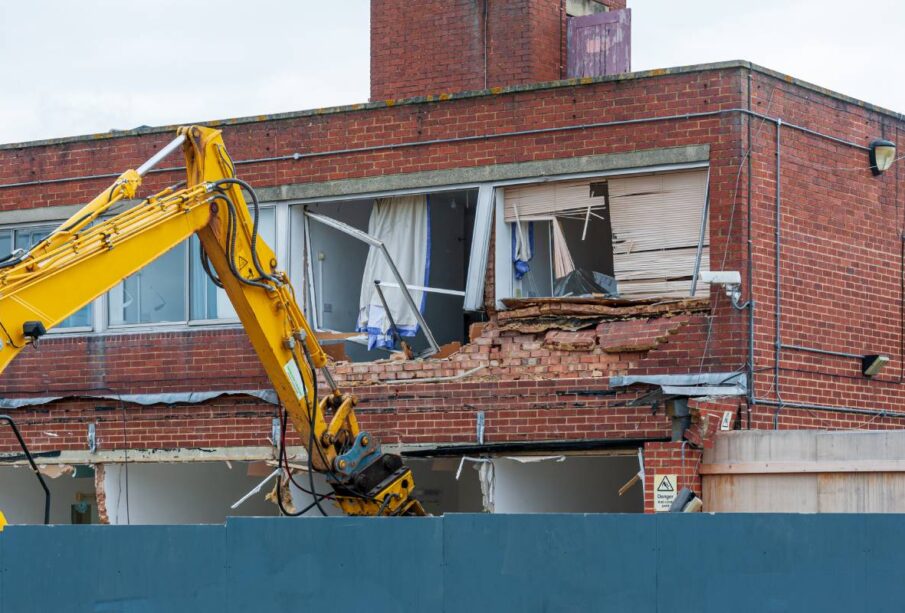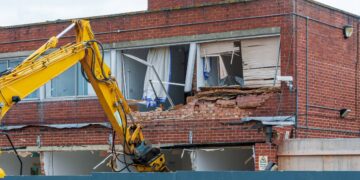Can You Stay in Your Home During the Preparation Phase of Demolition?

Thinking about knocking down your home but unsure if you can stay put during the preparation phase? You’re not alone. Many homeowners face this dilemma when planning a house demolition in Australia. The idea of staying in your property for a little longer — while approvals come through or while you organise alternative accommodation — can seem like a practical and cost-saving choice.
But is it really safe, practical, or even legal to stay in a home that’s scheduled for demolition? Let’s take a detailed look at what happens during the pre-demolition stage, the risks of staying, and what you should do to prepare for the big knockdown.
Why Some Homeowners Want to Stay Longer
Moving out before demolition can feel overwhelming. You might be juggling several issues:
-
Waiting on council approvals: Demolition and rebuild projects require permits and paperwork, which can sometimes take weeks to finalise.
-
Budget concerns: Temporary accommodation, whether it’s renting or staying in a hotel, can be costly. Some homeowners try to minimise expenses by staying in the property until the last possible moment.
-
Logistical delays: Builders, demolition contractors, or removalists may not be ready when you are. Staying put feels like a way to buy more time.
-
Sentimental attachment: For many people, leaving a family home for the last time can be emotionally difficult. Staying a little longer feels like a way to ease the transition.
These reasons are understandable. But unfortunately, there are serious safety, legal, and practical issues that make living in a soon-to-be-demolished house a bad idea.
The Main Safety Risks of Staying On-Site
Even before the heavy machinery arrives, your home becomes a hazardous environment once demolition preparation begins. Here are the major concerns you need to be aware of:
1. Asbestos Removal
Many older Australian homes, particularly those built before the late 1980s, contain asbestos in ceilings, walls, roofs, or eaves. Before demolition can start, asbestos must be carefully removed by licensed professionals.
-
Living in the house during asbestos removal is not permitted. Exposure to airborne fibres poses a serious health risk, including asbestosis and mesothelioma.
-
Regulations require the entire property to be vacated before asbestos work begins.
If asbestos is present in your property, this alone makes staying on-site impossible.
2. Service Disconnection
Another essential step before demolition is the disconnection of services such as electricity, gas, water, and NBN.
-
Once utilities are cut, living in the property becomes extremely inconvenient — no power, hot water, heating, cooling, or internet.
-
More importantly, it creates safety hazards. For example, live wires or unsealed gas connections can be dangerous if people remain on the premises.
Simply put, a house without utilities isn’t just unliveable, it’s unsafe.
3. Structural Instability
Demolition preparation often involves soft strip-outs — the removal of kitchens, bathrooms, doors, windows, and non-load-bearing walls. These works leave the house structurally weakened.
-
The risk of collapse increases as internal supports are removed.
-
Work crews may begin dismantling roofing, ceilings, or flooring, making the environment dangerous.
Staying inside during this stage is unsafe and could even expose you to injury or liability issues.
What Happens During Pre-Demolition Work?
It’s helpful to understand what actually goes on before a house is knocked down. Here’s a breakdown of the usual steps:
-
Site inspections and walkthroughs – Contractors assess the property and note potential hazards.
-
Hazard checks – Asbestos testing and identification of structural risks are carried out.
-
Council approvals and permits – Documentation must be confirmed before physical work begins.
-
Utility disconnection – Gas, power, water, and internet are safely disconnected.
-
Soft strip-outs – Kitchens, bathrooms, light fittings, and internal features are removed.
-
Tree and vegetation removal – If necessary, trees and shrubs are cleared for machinery access.
-
Installation of fencing and signage – The property is secured as a worksite with safety barriers.
-
Access planning – Paths for trucks and excavators are prepared.
By this point, your home is no longer a liveable space — it’s a worksite with active hazards.
Are There Any Exceptions?
Occasionally, homeowners ask whether they can stay in a granny flat, garage, or secondary dwelling on the same block while demolition takes place. This might be possible if:
-
The dwelling is fully detached from the main house.
-
It has its own utilities that won’t be affected by disconnection.
-
It’s located a safe distance away from the demolition zone.
-
Both your demolition team and local council approve the arrangement.
However, even in these cases, contractors rarely recommend it. Demolition involves dust, noise, heavy machinery, and constant truck movement — hardly a safe or comfortable environment for residents.
Legal and Insurance Considerations
Living in your house during demolition prep isn’t just unsafe — it may also breach legal and insurance requirements.
-
Council compliance: Local councils often stipulate that a property must be vacant during asbestos removal and demolition.
-
Insurance coverage: Most home insurance policies won’t cover you if you’re injured on a demolition site while living there.
-
Workplace safety laws: Contractors are legally responsible for safety on-site. Allowing residents to remain can violate occupational health and safety regulations.
In short, staying could expose you to fines, insurance disputes, or legal claims if anything goes wrong.
Pre-Demolition Move-Out Checklist
Leaving your home before demolition doesn’t have to be stressful if you plan ahead. Here’s a simple checklist to follow:
- Remove all furniture, appliances, and personal belongings.
- Arrange storage for valuables — either at a self-storage facility or with friends/family.
- Close out utility accounts and organise disconnection with service providers.
- Notify your local council and insurer that you’re vacating.
- Book temporary accommodation well in advance.
- Let neighbours know about demolition dates (they’ll appreciate the heads-up).
- Do a final walkthrough with your demolition contractor to ensure nothing is left behind.
- Keep permits, approvals, and quotes in a safe place for easy access.
FAQs About Staying in a Home During Demolition Prep
Can I live in the house during asbestos removal?
No. It is illegal and extremely unsafe. The property must be fully vacated.
How long does demolition preparation usually take?
Typically one to two weeks, but the timeline may be longer if asbestos removal or tree clearing is required.
Can I leave old furniture in the house?
No. Anything left behind will be treated as demolition waste, which can increase disposal costs.
Is it cheaper to stay until the last moment?
Not really. Delays, fines, or health risks can make it more expensive in the long run.
Do I need to notify the council?
Your demolition contractor usually manages approvals, but notifying your council and insurer when vacating is always wise.
Why Professional Demolition Services Matter
Demolition may look straightforward from the outside, but it involves strict safety standards, legal compliance, and technical expertise. From asbestos removal to waste disposal, every step requires professional handling.
This is why choosing a reputable demolition contractor is essential. For homeowners in Sydney, working with experienced companies such as ABC Demolition Group in Sydney ensures that your project is completed safely, legally, and efficiently. They handle everything from approvals and disconnections to asbestos removal and final clearance, giving you peace of mind that your demolition is in safe hands.
Final Thoughts
While the idea of staying in your home during demolition preparation might seem convenient, it’s neither safe nor practical. From asbestos risks to structural instability and loss of utilities, the environment quickly becomes hazardous once demolition prep begins.
Instead of risking your health, safety, or legal compliance, it’s best to move out before demolition starts and let the professionals do their job. With careful planning and the support of an experienced demolition contractor, the process can be smooth, safe, and stress-free — setting the stage for your exciting rebuild or redevelopment project.













